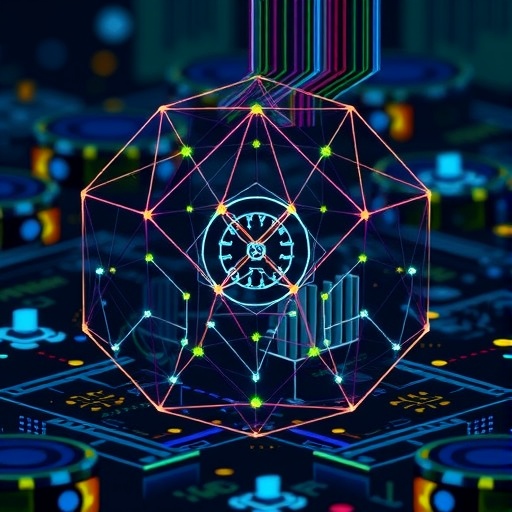In recent years, the push for advanced battery technologies has seen an unprecedented surge, driven by the growing need for energy storage solutions in various sectors ranging from consumer electronics to electric vehicles and renewable energy systems. Researchers are increasingly looking towards innovative characterization techniques that can enhance our understanding of battery materials’ multifaceted behaviors and properties. One pivotal study contributing to this discourse is the review entitled “Toward standardized, AI-driven multi-modal battery characterization,” authored by Barah et al., which sheds light on the integration of artificial intelligence with neutron and synchrotron strategies for battery characterization across different scales.
The core of the discussion revolves around the challenge of characterizing batteries in a standardized manner. Standardization is crucial, as it ensures reliable comparisons of battery performance across various studies and applications. Traditional methods of battery characterization often exhibit significant variability, hindering progress in battery technology. In this light, Barah and his colleagues propose the adoption of AI-driven approaches to streamline and standardize these processes, aiming to facilitate more accurate data acquisition and interpretation.
Artificial intelligence has significant potential to revolutionize battery research by automating data analysis, identifying patterns, and offering predictive insights. The review highlights how AI algorithms can process vast amounts of experimental data generated from neutron and synchrotron facilities to better understand battery characteristics such as conductivity, structural changes during charge/discharge cycles, and degradation mechanisms. This methodology not only accelerates the research process but also enhances the precision and accuracy of the results obtained.
Neutron and synchrotron techniques themselves are powerful methods for materials characterization. Neutron scattering, for example, is particularly effective in providing information about the atomic and molecular structures of materials. It allows researchers to observe dynamic processes and interactions within the battery components under real operational conditions. The review discusses how neutron scattering can be instrumental in monitoring phase transitions and capturing the behavior of ions in the electrolyte, crucial aspects of battery function.
On the other hand, synchrotron radiation offers high-resolution insights into the electronic structure and chemical state of battery materials. By using synchrotron X-ray techniques, researchers can study the local environment of elements within the electrode materials and understand how they evolve during cycling. The authors emphasize the need for a synergistic approach that combines these complementary techniques with AI-powered analyses, paving the way for breakthroughs in battery performance optimization.
The authors advocate for establishing a framework that fosters collaboration between battery scientists, AI experts, and facilities specializing in neutron and synchrotron analysis. Such interdisciplinary efforts are essential to develop AI models specifically tailored to battery research. The integration of knowledge across disciplines can accelerate innovation, making it significantly easier to tackle the technical challenges that persist in energy storage technology.
Additionally, the review elucidates the implications of adopting a multi-modal characterization approach. Different techniques provide unique insights, and when combined, they can paint a more comprehensive picture of the battery system. The authors argue that multi-modal approaches reduce the reliance on a single characterization method, thus providing robust and reliable data to support the development of next-generation batteries with superior performance metrics.
As the quest for better energy storage continues, the findings presented by Barah and colleagues are particularly timely. The energy landscape is rapidly evolving with the growing emphasis on sustainability and the transition towards renewable sources. Batteries are integral to this transition, and understanding their complexity will determine the advancement of technologies like electric vehicles and grid storage solutions. This review not only contributes to the broader scientific conversation but also sets a clear agenda for future research endeavors.
Funding agencies and institutional bodies must recognize and support the need for developing standardized, AI-driven methodologies in battery research. Investing in cutting-edge facilities and collaborative networks will enable researchers to share insights and datasets more freely, thus fostering a culture of innovation and improving the pace of discovery in the field of battery technology.
Moreover, a concerted effort should be made to disseminate the findings of such research to a broader audience beyond the scientific community. Engaging industry stakeholders, policymakers, and the general public is crucial to ensure that the advancements in battery technology culminate in tangible benefits for society. Promoting awareness of these developments can stimulate interest and investment, ultimately contributing to the global goal of achieving sustainable energy solutions.
In conclusion, the review by Barah et al. represents a significant stride towards modernizing battery characterization techniques through the synergistic application of artificial intelligence, neutron, and synchrotron technologies. The potential this holds for the future of battery research is immense, and it underscores the importance of an interdisciplinary approach in addressing the complex challenges of energy storage. As the world moves towards a more sustainable future, the role of advanced battery technologies will be paramount, and studies such as this illuminate the path forward.
Subject of Research: Advanced Battery Characterization Techniques
Article Title: Toward standardized, AI-driven multi-modal battery characterization: a review of neutron and synchrotron strategies across scales.
Article References:
Barah, O.O., John, U.K., Eze, V.H.U. et al. Toward standardized, AI-driven multi-modal battery characterization: a review of neutron and synchrotron strategies across scales.
Ionics (2025). https://doi.org/10.1007/s11581-025-06698-z
Image Credits: AI Generated
DOI: https://doi.org/10.1007/s11581-025-06698-z
Keywords: Battery characterization, Artificial intelligence, Neutron scattering, Synchrotron radiation, Standardization, Multi-modal approaches, Energy storage technology
Tags: advanced battery materials characterizationAI-driven battery characterizationartificial intelligence in battery technologyautomated data analysis in battery researchbattery performance comparisonchallenges in battery standardizationEnergy Storage Solutionsinnovative battery characterization methodsmulti-modal battery analysis techniquesneutron and synchrotron techniquespredictive insights in battery technologystandardization in battery research





